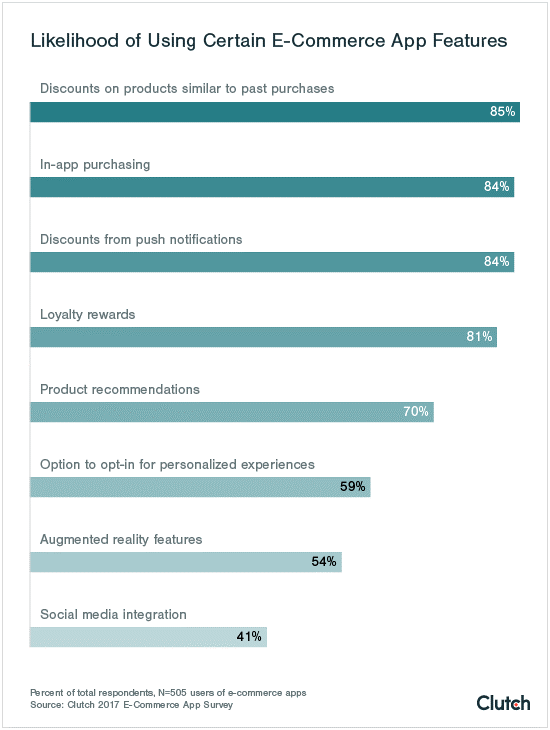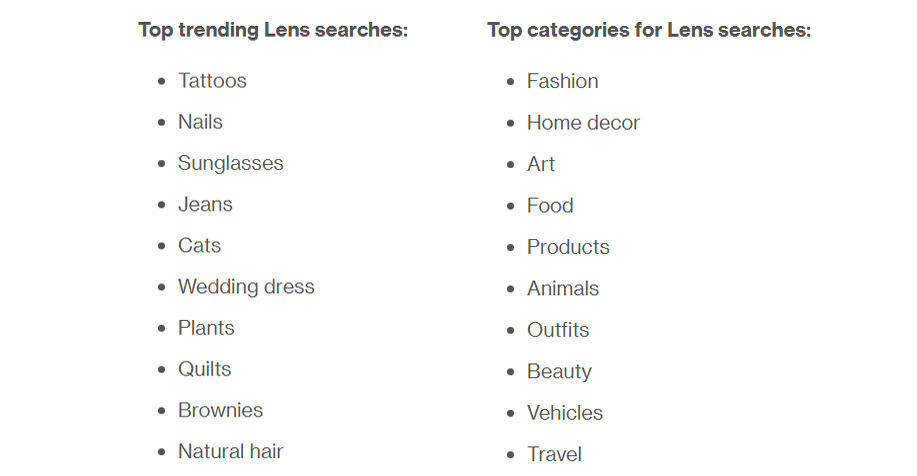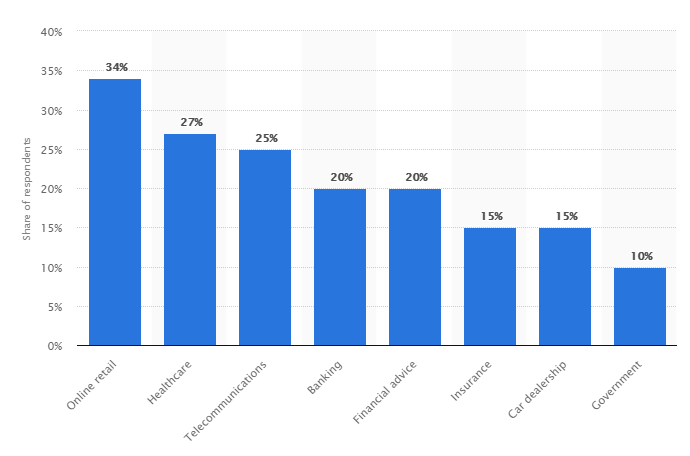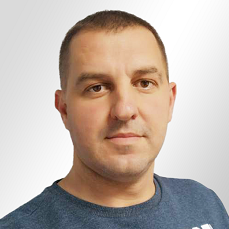Which features do the users want from your mobile shopping brand? And how can you implement them in your app? Learn about ecommerce best practices in this article.
‘In the beginning, ecommerce was really about getting commodity products online as cheaply as possible. Now, we’re moving into the more exciting phase of ecommerce, where it’s about emotional products – the things that people really cherish.’
Jason Goldberg, founder, and CEO of Fab.com
We’ve cast a look at how top ecommerce traders are responding to the shift in consumer expectations and are sharing their best practices in this article.
Mobile apps conquer shopping landscape
‘Big box and department stores have an advantage over Amazon and other ecommerce giants, thanks to in-person interactions with customers.’
The State of Mobility in Department & Big Box Stores 2017, DMI Inc.
Consumers may still be super positive about traditional brick and mortar stores, but in 2018 54% of customers expect physical retailers to offer a mobile shopping app.
Their willingness to spend online results in about 12% of all retail purchases worldwide made on the Internet. This adds up to almost 2.85 trillion U.S. dollars from global e-retail sales.
According to Criteo Global Commerce Review 2018, mobile accounts for more than 50% of online transactions. At the same time, namely, mobile apps make up 70% of sales for retailers who invest in both mobile web and mobile app features.
In North America, shopping apps show 3 times better conversion rates than mobile web.
 Source: Criteo, North America, Q1 2018
Source: Criteo, North America, Q1 2018
More than that, mobile also drives conversions for other channels. In 2017, around every fourth desktop purchase was preceded by a click on a mobile device.

Must-have mobile shopping app features
Building any mobile app requires knowledge of the target audience.
Modern shoppers perceive simple browsing and buying functionality as something that comes with any shopping app by default. To increase customer loyalty, app vendors should go the extra mile and offer innovative ecommerce features such as discounts, rewards, recommendations or augmented reality.

Discounts and loyalty rewards - TOP the wanted features list
Consumers want e-commerce apps to provide them with exclusive, individually tailored content and deals that would prompt them to make a purchase.
85% of app users would make purchases to get discounts, while 84% would turn on push notifications about any deals.
Walgreens offers its customers paperless coupons for certain items. They can clip and redeem them later either in a brick and mortar store or online.
However, as more new mobile apps enter the market, it’s becoming vital for top ecommerce apps to introduce more sophisticated features like gamification to engage and retain the customers.
‘Winning is tied into the pleasure circuits of the brain. Every time we achieve, dopamine is released -- achieve bigger goals, release larger amounts of dopamine. In this way, humans are hardwired to want to play games.’
Brandon Marsala, Creative director of content and strategy at Mindspace
The basic principle of gamification is to reward the involvement with the brand and nurture a sense of loyalty. This method is often used in eLearning to increase students’ involvement and interest. Some of the top apps, like Duolingo, owe their success to gamification.
For example, Aliexpress’ gamified UX is primarily built around urging users to earn coins and exchange them for discount coupons. To get the coins, the users should complete a variety of daily tasks or play mini-games within the app.
 Source: technewshere.com
Source: technewshere.com
Offering some kinds of loyalty rewards, your app can attract more than 80% of mobile shoppers.
Walgreens also encourages its users to get discounts based on their health habits and exercise achievements. Each mile of walking, running or cycling gives the user 20 points. 1000 points collected is 1$ off a future check.
The popularity of Starbucks is also closely tied up to their rewards program, However, the brand went even further with its mobile payment service and became the most popular mobile proximity payment app in the US, staying ahead of Apple Pay and Google Pay.
‘The Starbucks app is one of the bigger success stories in mobile proximity payments. It has gained traction thanks to its ability to tie payments to its loyalty rewards program. For users of the app, the value of paying with their smartphone is clear and simple—you can save time and money at the register, all while racking up rewards and special offers.’
eMarketer forecasting analyst Cindy Liu
The Rewards feature of the Starbucks app allows its members to earn 2 stars per each dollar spent, which they can later use to get the sum off the check, birthday rewards, free in-store refills, special offers as well as the ability to order ahead and pay via a mobile app.
Recommendations and reviews
The mobile shopping journey is much more about browsing than searching. When app users are not yet exactly sure which item or from which brand they want to buy, it is a good time for an app to give them a helping hand.
User-friendly e-commerce apps analyze the browsing history and previous orders and come up with recommendations for similar items. 70% of the customers said they would use recommendations. Their enthusiasm is backed up by the fact that 35% of purchases on Amazon come from custom-designed recommendations.
 Source: www.clutch.co
Source: www.clutch.co
According to Local Consumer Review Survey 2018 prepared by BrightLocal, 91% of 18-34 year old consumers trust online reviews as much as personal recommendations.
In-store integration
While the line between digital and physical worlds is blurring over, so is the gap between online and on-location shopping experience.
‘About 57% of consumers surveyed said they have used a retailer's mobile app while in-store’
RetailDive reports
At the same time, 44% of customers believe that using mobile devices enriches their brick-and-mortar shopping experience.
That gives retailers an excellent chance to engage their customers on a more personal level, driving shoppers’ loyalty and, consequently, sales.
Walmart’s re-imagined mobile app is one of the examples of blending the two worlds to enhance the brick-and-mortar shopping. Once a customer enters the store, the app automatically transforms into Store Assistant.
With the Walmart app, shoppers can:
- create sophisticated shop lists (which is 80% of Walmart shoppers actually do) and see whether the wanted products are in stock and even their exact in-store location;
- locate the wanted items with in-store maps feature;
- see which special services are offered in this particular store as well as department hours and contact information;
- scan products to easily read reviews and double-check prices.
As most retail operations are linked to barcodes, it would not hurt to get the most value from them and integrate scanning functionality as one of your mobile shopping app features.
 Source: www.scandit.com
Source: www.scandit.com
For example, Macy’s app in-store mode allows its users to scan barcodes to check the price, study reviews and see color and size options. When the item is in the shopping cart, users can easily apply relevant discounts and rewards. Then they should go the checkout counters where the cashier verifies the purchase, removes security tags and bags the purchase.
Augmented reality
Consumers love hi-tech features.
More than half (54%) mobile shoppers said that they would use an augmented reality technology if an app offered it.
61% of shoppers would shop in a store that offers augmented reality on the list of its ecommerce app features over one that does not. 72% have made purchases they were not going to make just because of AR. And 40% would be ready to pay more for an item if they could experience it through augmented reality.
‘Augmented reality is in a really exciting place right now. It’s a great way to show how the mobile experience can literally exist in real life and help drive confidence to the user that the purchase they are making is a sound one.’
Dan Healy, COO of Prolific Interactive
Many retailers are striving to overshadow their competitors by offering a highly curated experience that combines the best of in-store and online shopping.
For example, Amazon uses the phone’s camera to scan the surroundings. When a user selects an item from the catalog, the app renders the chosen piece of furniture to show how it will look in your home.
Sephora’s Virtual Artist, for example, gives its shoppers the opportunity to virtually try on infinite variations of shades and colors, save, share and buy their favorite looks.
‘With these additions, Sephora Virtual Artist continues to put the power and expertise of Sephora quite literally in the palm of our clients’ hands.’
Bridget Dolan, VP of innovation at Sephora
‘Since launching Sephora Virtual Artist in 2016, our clients have virtually tried on hundreds of millions of shade combinations. It gives her the freedom to choose when, where and how she wants to shop as she creates customized looks and discovers the products that are just right for her.’
Bridget Dolan
Image recognition
“The future of search is going to be about pictures instead of keywords” Pinterest’s CEO Ben Silbermann, said.
And the strategies of such major retailers as Amazon, Macy’s, Wayfair, eBay, and Asos seem to dovetail with that standpoint.
Pinterest has published an interesting insight based on the most popular searches its users made with its Lens (visual search tool in 2017).

It seems that brands that come from fashion and home decor sectors have the best chances to reap profits from a visual search feature.
With eBay’s Image Search one can just take a pic or upload an existing one of the item wanted and the app will show the list of the items with similar visual features.
‘When you upload images to run Find It On eBay and Image Search, we use a deep learning model called a convolutional neural network to process the images. The output of the model gives us a representation of your image that we can use to compare to the images of the live listings on eBay. Then, we rank the items based on visual similarity and use our open-source Kubernetes platform to quickly bring these results to you, wherever you are in the world.’
eBay blog post
Social integration
41% of m-commerce customers want their apps to have an option to share the content on their social media accounts.
Integration with social networks enriches the user experience. It satisfies a natural desire of people to connect with others, keeps them more engaged within the app and adds a personal aspect to the shopping.
For ecommerce apps, sharing with friends feature can not only naturally increase traffic, but also lead to higher sales. A Sprout Social report found out that 75% of people make purchases because they have seen the item on social media.
Amazon took a fresh stance on its social media presence when it launched Amazon Spark in 2017. Part of the Amazon app, Spark allows users to discover its inventory with a “shoppable feed of stories photos”.
 Source: techcrunch.com
Source: techcrunch.com
New users select a few interests to create a feed of personalized content from other followers and are encouraged to post and react to the content they love. One can buy a product with a simple click of a button on the shopping bag icon.
The motivation behind the feature was to redirect the social activity from third-party sites and apps back to Amazon.
Chatbots
According to Statista survey conducted in 2017 worldwide, 34% of respondents said they would be willing to receive customer service from AI chatbots in online retail (more than in any other industry).

Many brands have already adopted AI-powered chatbots to improve customer service, provide tailored recommendations and drive sales.
As Ubisend 2017 Chatbot Survey states,
- 70% of consumers are encouraged to interact with chatbots because of the opportunity to get instant answers to their questions;
- 43% of respondents perceive companies offering chatbots as innovative;
- 22% see them as ‘more efficient’ in their customer service
- 1 in 5 (21%) shoppers would buy goods and services from a chatbot
- Consumers are willing to spend up to $615 via chatbot.
Chatbots serve not only as another channel for deals and making mobile purchases. This feature helps to establish a lasting point of reference and dynamic communication with potential clients on their way to the checkout page.
The fashion clothing brand H&M developed an interactive chatbot based on the Kik messaging platform. The purpose of the bot is to help mobile users to navigate through the brand’s offerings. The experience starts with selecting the photos of clothing you like and answering simple questions. When the chatbot gets a comprehensive picture of one’s style, it gives the user personal look recommendations, allows to save and socially share the outfit and redirects to purchasing the clothing.
 Source:https://uxplanet.org
Source:https://uxplanet.org
Belitsoft has worked with similar ideas. A chatbot we’ve developed for one of our clients handles lead generation for several healthcare companies.
Simple and intuitive
Hick’s law says that the more alternatives to choose from the user has, the more time they require to make a decision. Users bombarded with options have to take time to analyze and make a decision which is not what e-commerce owners really need.
For example, larger product images can increase the conversion rate by almost 10%. Consequently, a fewer number of items on the page encourages a smoother shopping experience.
In the world where the average human attention span is 8 seconds, a proper visual hierarchy is crucial for the success of any design.
 Source: dribble.com
Source: dribble.com
Hick’s law is also a principle to follow when designing, perhaps, the most crucial element of any e-commerce app - checkout page.
Instead of pressing the whole knotty payment feature on a single page, one can divide the process into several screens.
Reduced number of options on a screen makes the process more clear and user-friendly. A satisfied user is much more likely to complete the payment and not abandon it halfway through.
Key Takeaways
- 50% of e-commerce transactions are made via mobile devices;
- 85% of mobile shoppers want to get discounts on items similar to their past purchases;
- 81% of users would like to receive loyalty rewards from your app;
- 70% of the customers use recommendations in mobile shopping apps;
- 51% of people who use retail apps use them when they are in-store;
- 61% of shoppers would choose a store that offers AR features over one that does not;
- 41% of consumers want to share their findings on social media;
- 21% of shoppers would buy from a chatbot;
- larger product images in ecommerce apps increase sales by 10%.
Recommended posts
Our Clients' Feedback


















.jpg)
.jpg)
.jpg)
.jpg)
.jpg)
![How to Create a Language Learning App [The Ultimate Guide!]](/uploads/images/blog/posts/previews/image_155352483594-image(600x250-crop).png)
.jpg)
.jpg)
.png)
.png)
.jpg)
.jpg)
.jpg)
.jpg)
.jpg)
.jpg)
.jpg)
.jpg)
.jpg)
.jpg)
.png)
















We have been working for over 10 years and they have become our long-term technology partner. Any software development, programming, or design needs we have had, Belitsoft company has always been able to handle this for us.
Founder from ZensAI (Microsoft)/ formerly Elearningforce